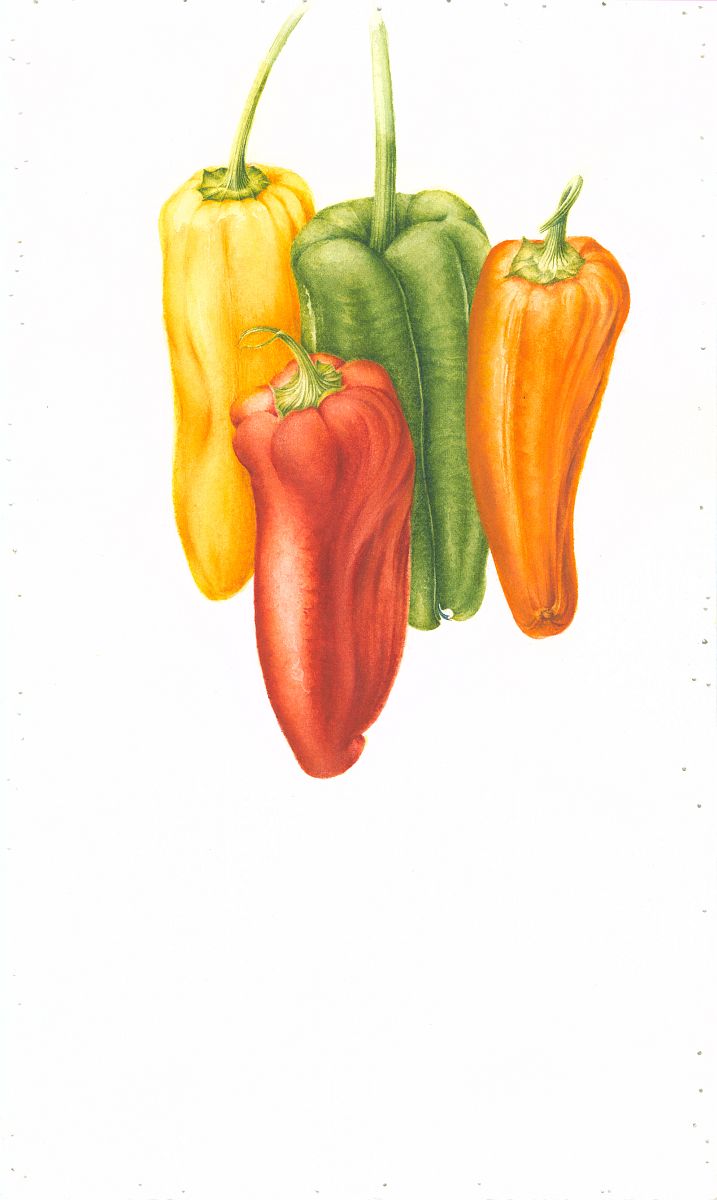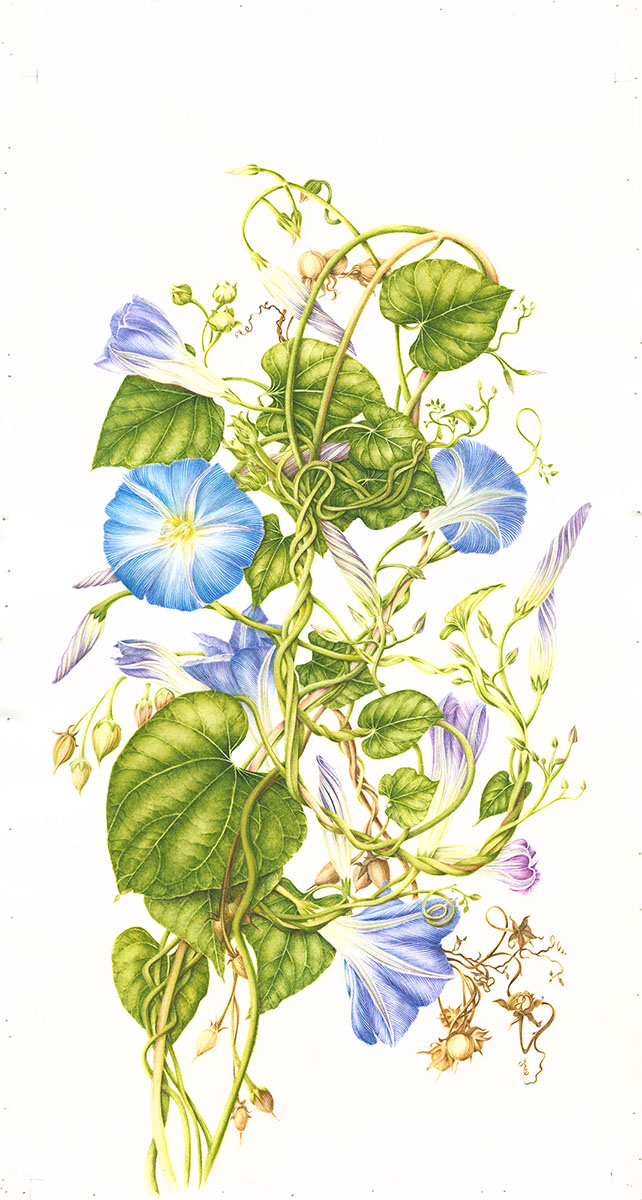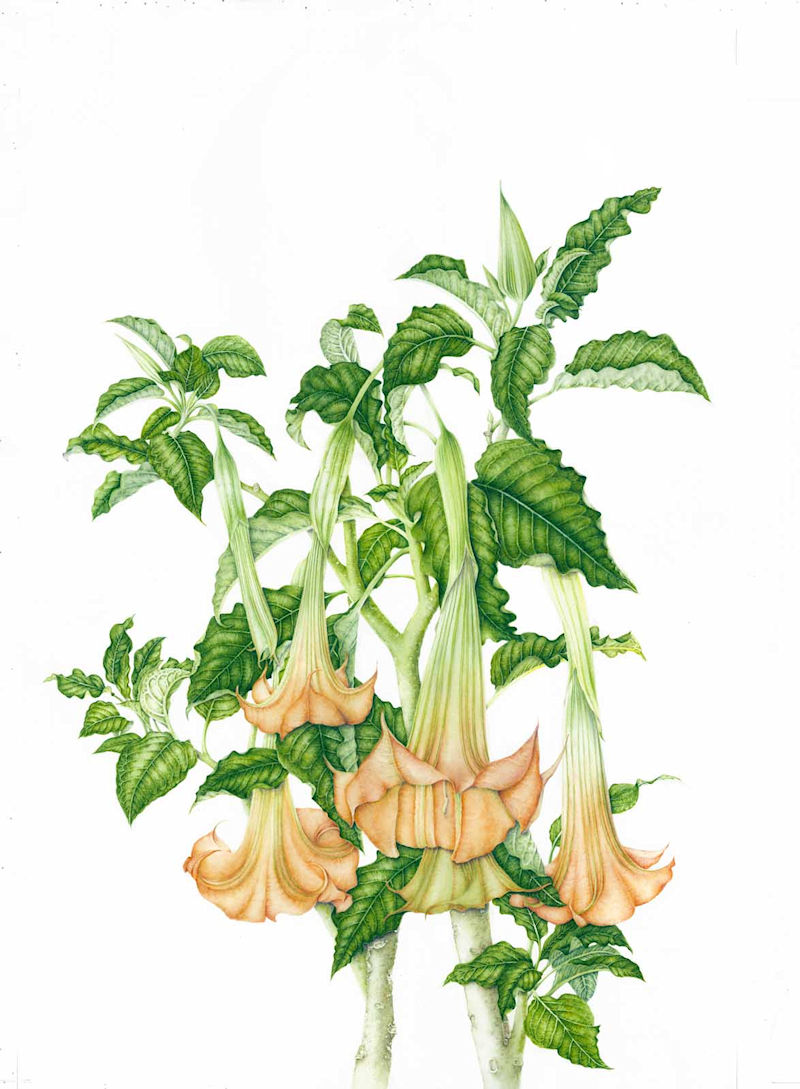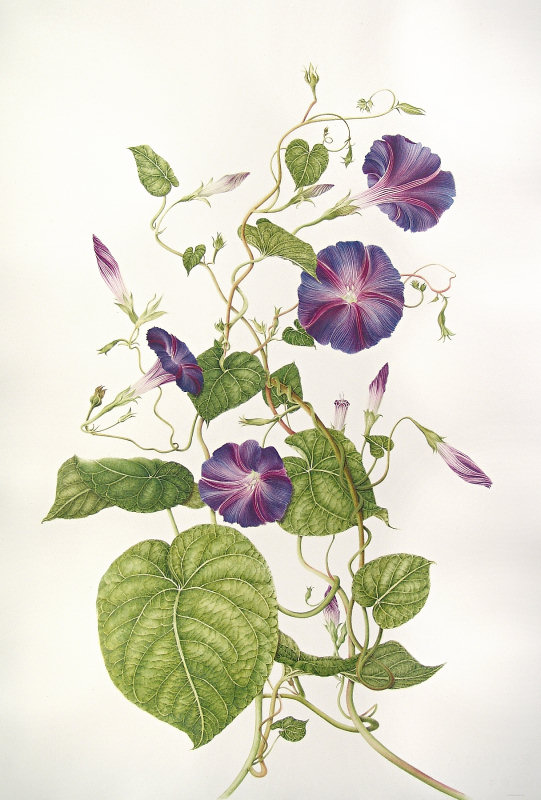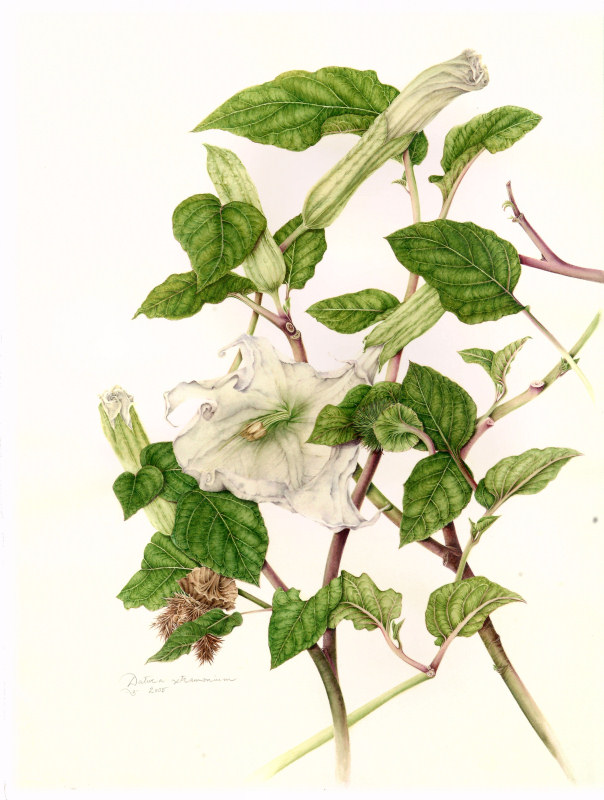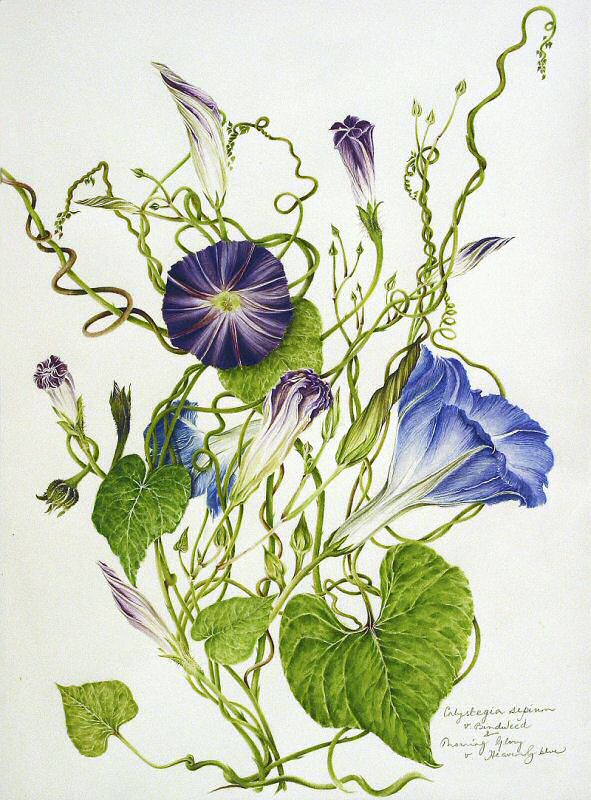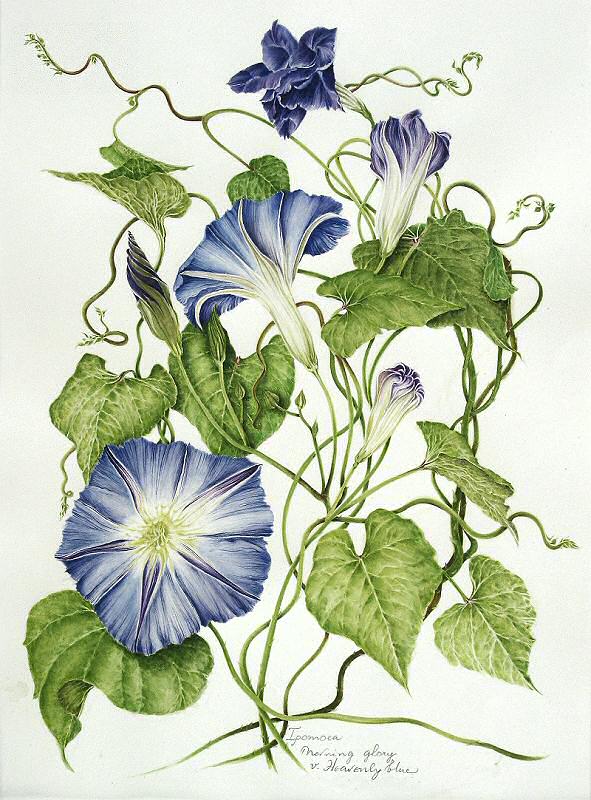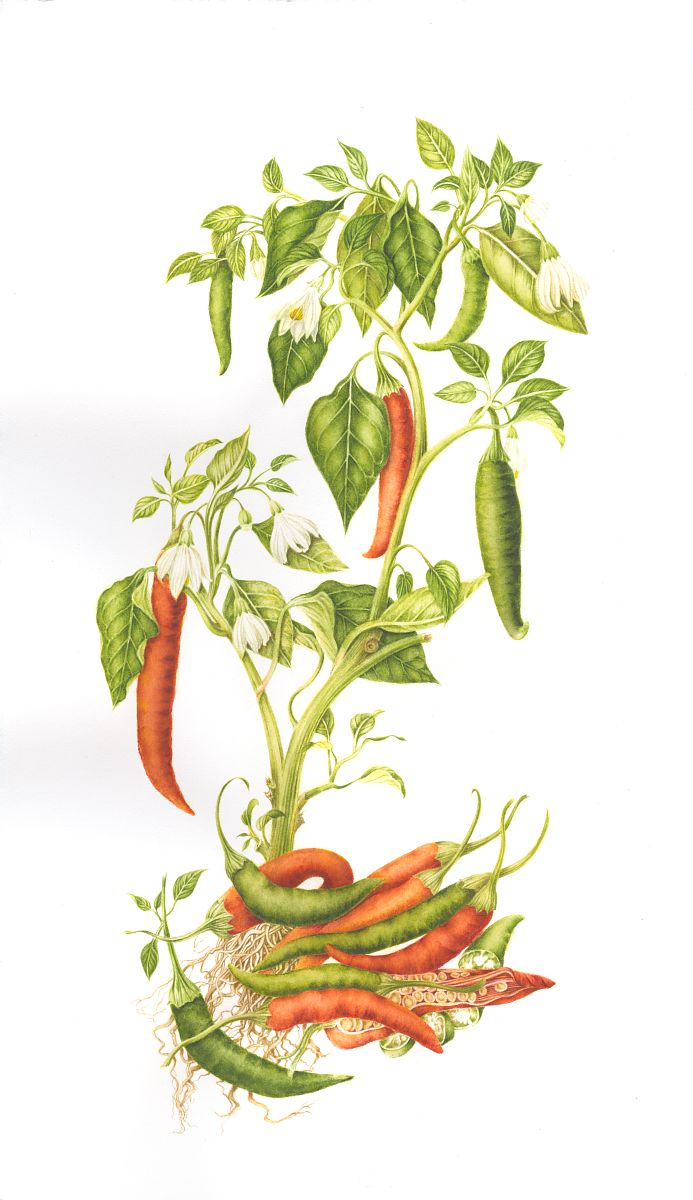
Cayenne pepper
7″ x 14″, 2018
The mention of chilies instantly conjures up an aroma of spicy, piquant food from Asia to Mexico and North Africa. For millennia Asian cuisine was spiced with ingredients such as ginger, assorted radish, cloves, cardamom, nutmeg, mace and cinnamon and black peppercorns, but with no trace of chilies whatsoever. A 180° longitude west, in Mesoamerica and parts of South America, the chili plant had been cultivated for over 5,000 years. So how did this remarkable ingredient become such a vital ingredient in the diet of people half-way across the planet?
